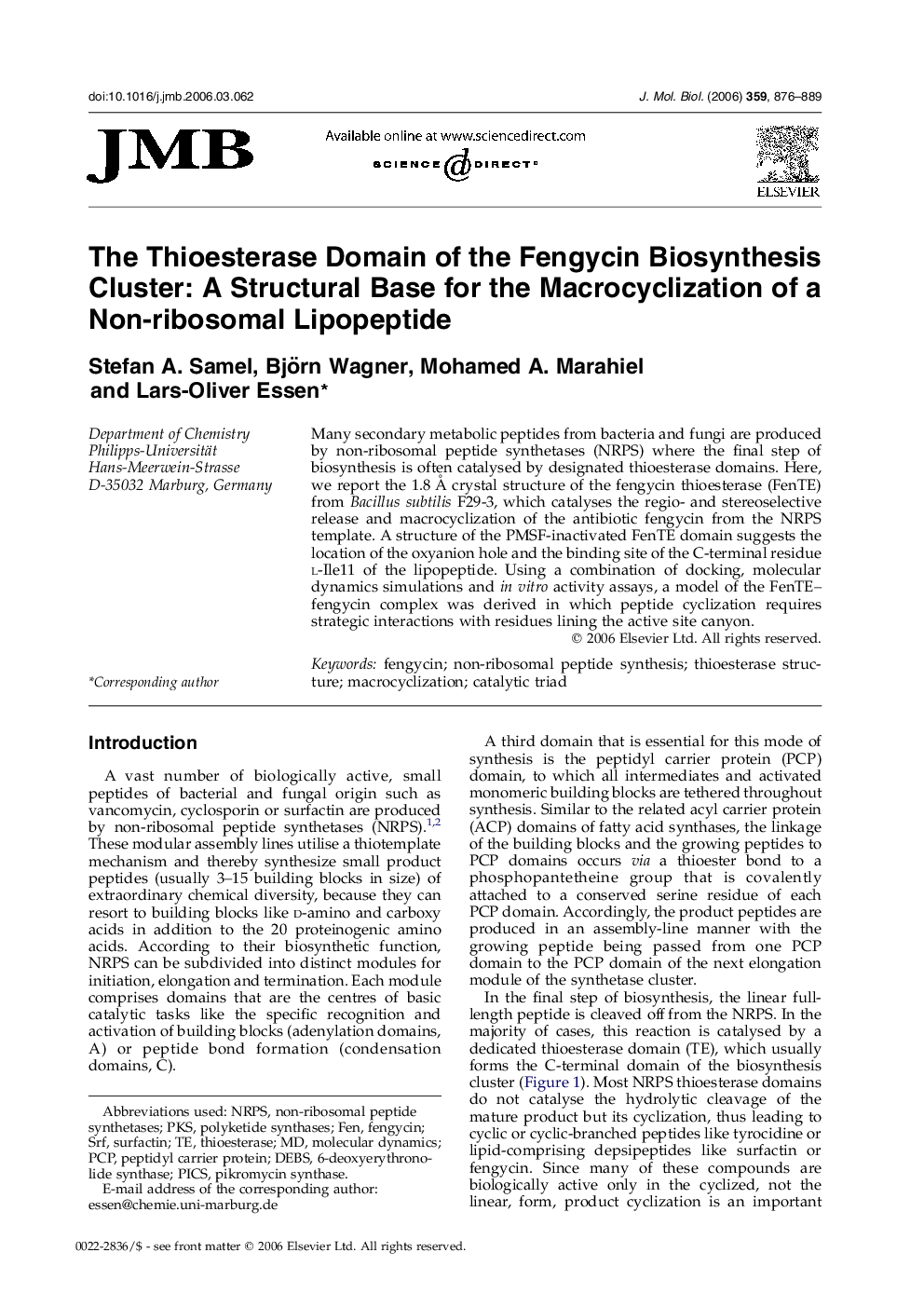| Article ID | Journal | Published Year | Pages | File Type |
|---|---|---|---|---|
| 2189548 | Journal of Molecular Biology | 2006 | 14 Pages |
Many secondary metabolic peptides from bacteria and fungi are produced by non-ribosomal peptide synthetases (NRPS) where the final step of biosynthesis is often catalysed by designated thioesterase domains. Here, we report the 1.8 Å crystal structure of the fengycin thioesterase (FenTE) from Bacillus subtilis F29-3, which catalyses the regio- and stereoselective release and macrocyclization of the antibiotic fengycin from the NRPS template. A structure of the PMSF-inactivated FenTE domain suggests the location of the oxyanion hole and the binding site of the C-terminal residue l-Ile11 of the lipopeptide. Using a combination of docking, molecular dynamics simulations and in vitro activity assays, a model of the FenTE–fengycin complex was derived in which peptide cyclization requires strategic interactions with residues lining the active site canyon.
